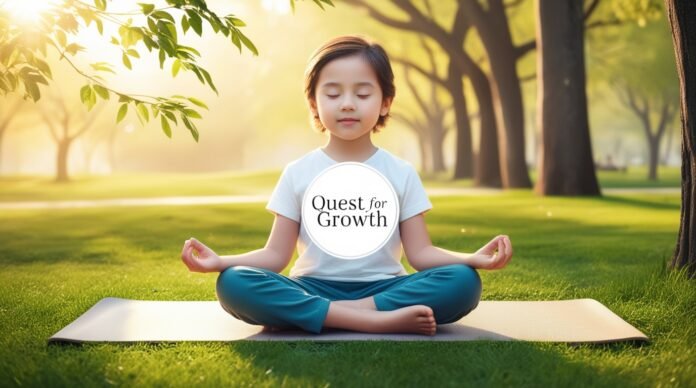Mindfulness for children’s emotional regulation is one of the new trends in improving emotional health, not only in adults but also in children. A child’s emotional growth very much depends on emotional regulation-the ability to manage and respond to emotions in a healthy way within oneself. The practice of mindfulness for children’s emotional regulation can benefit children in learning how to name feelings, discover their triggers, and modify their actions to thoughtful responses rather than immediately reacting. In this article, readers will learn how mindfulness helps children in establishing emotional regulation and some applications for teachers and parents.
Early introduction of mindfulness gives a child lifelong tools in managing emotions. Emotional regulation is not only useful for personal growth but also helps lay the groundwork for meaningful relationships and achievements in this world full of distractions and stress. The result of this ‘practice’ would be increased resilience and patience, with a little inner peace that will come to their aid for the rest of their lives. Mindfulness is that ultimate light of understanding and calmness for children to help them in navigating their emotional ability in the world.
What Is Mindfulness?
Mindfulness can be defined as the practice of attending the moment fully, noticing thoughts and feelings without judgment. In that sense, mindfulness would be about distraction-free focus on the experience rather than flooding emotions, developing into improved awareness of body, mind, and environment. Mindfulness does not eliminate emotions; rather, it is the recognition and management of emotions associated with the process itself.
Key Benefits of Mindfulness for Children’s Emotional Regulation
- Improved Concentration: Mindfulness improves a child’s ability to concentrate by training the brain to remain focused on the present moment.
- Managing Stress: It helps children learn how to cope with their stress and anxiety better while enhancing mental clarity and calmness.
- Awareness of Oneself: Mindfulness opens up the knowledge of one’s own emotions to better decision-making.
- Improved Social Skills: Kids learn empathy and communication through mindful interaction, developing deeper relationships.
- Better Academic Results: People who are more mindful tend to perform better academically by being more focused and less anxious during tests.
- Increased Creativity: Mindfulness calms the mind perfectly and therefore motivates children to think with more openness and creativity.
Integrating mindfulness into everyday schedules, kids learn tools with which to balance the emotions and develop a strong sense of self. Instead of fear, they learn to confront problems with curiosity, which gets them better at problem-solving.
Why Emotional Regulation Matters
Emotional regulation means empowering children to give a (social) performance, improve their academic talents, and deal with life challenges. Struggling with emotions is likely to bring a behavioral problem, straining of school work, and potentially harm relationships with peers and family. Children will act impulsively and physically for a lack of emotional regulation skills, exacerbating misunderstandings and conflicts.
Signs of Emotional Dysregulation in Children
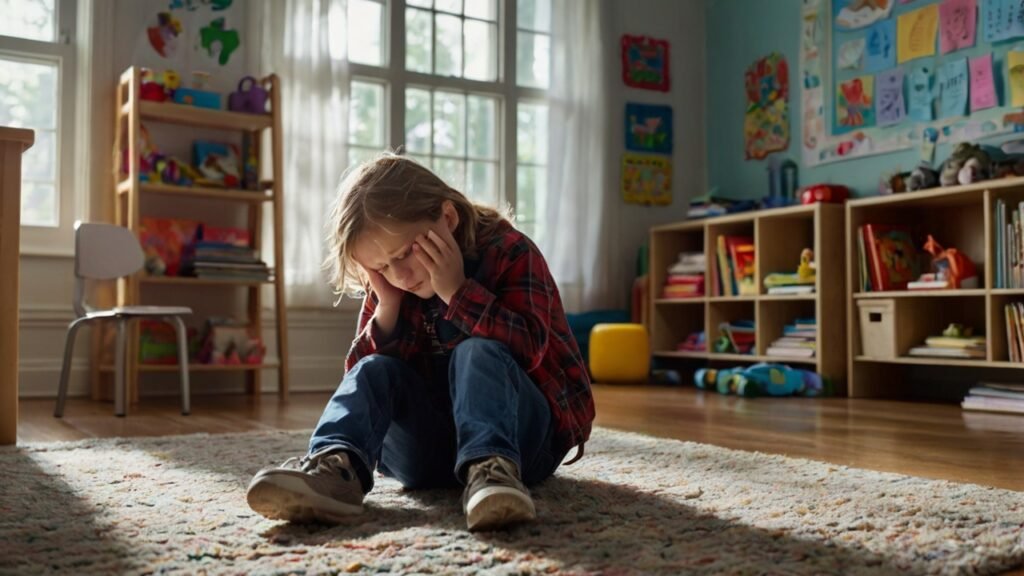
- Relatives are Very Upsetting: Rage or exasperation out of all bounds at times goes with the idea of being exposed to irritating people.
- Found Trouble Moving on from Emotional Situations: One really would take a very long time moving on from a situation where he was sorry or upset.
- Can’t Express Their Emotions: either ignores or suppresses feelings instead of working through them.
- Physical Ailments: For many younger children, emotional dysregulation often parallels elicited symptoms such as headaches or stomachaches.
- Moving Form an Activity to Another: Trouble sometimes passes with no emotional uneasiness while venturing from one activity to another.
The absence of emotion regulation in children leads to high overwhelm and consequently high effects on their mental health and relationships. The early identification of these cues will be a solution that caregivers could adapt to using methods such as mindfulness to manage this.
How Mindfulness Supports Emotional Regulation
Mindfulness for children’s emotional regulation teaches children to pause and think before they act, giving them space between their feelings and their actions. It allows them to have some space so that they can learn to feel their emotions without having to become lost in them. Using mindfulness techniques, children become more resilient and better able to deal with stress. Mindfulness acts like a “reset” for the mind that helps children shift from reactive to proactive thinking.
Scientific Evidence
Studies have shown that mindfulness for children’s emotional regulation can help reduce anxiety and depression symptoms among everyone under the age of eighteen. A meta-analysis published in the Journal of Child Psychology found that mindfulness-based interventions significantly improve emotional regulation in children. Mindfulness promotes increased activity in the prefrontal cortex, the brain region associated with decision-making and emotional regulation. Mindfulness also decreases the levels of cortisol, that is, the stress hormone in children and hence helps develop into better health as they face life situations. Being mindful regularly also equates to higher emotional intelligence which defines how well children read and interpret emotions, including their own and those of others.
Practical Mindfulness Techniques for Children
1. Deep Breathing Exercises
Encouraging Deep Breathing-the act of slow, deep breaths-from the little ones. Breathing deeply activates the parasympathetic nervous system and also turns an anxious person into someone relaxed.
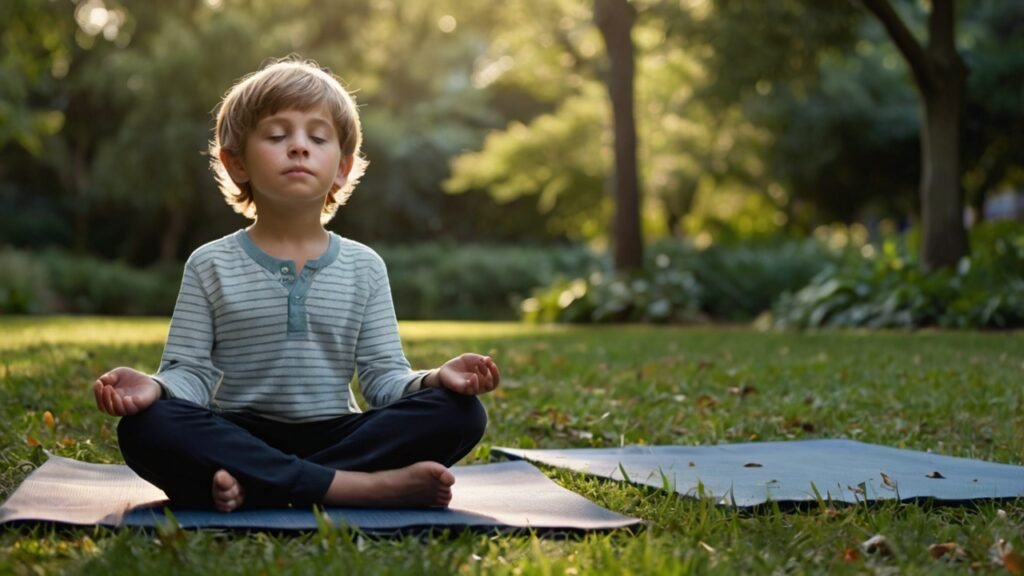
- For example: teaching the “balloon breath,” where one imagines inhaling into a balloon on the long breath in, and letting the air out of the balloon on the long breath out.
- Time: Just two minutes of deep breathing is helpful in getting children to relax and focus.
- Extra Tip: Merge breathing exercises with some calming music or sounds of the natural environment, which gives an even more immersive experience.
2. Body Scanning
Body scanning makes the awareness of physical sensations for children; for this, they need to lie straight down, concentrating on each part of the body, starting from toes till head.
- Benefits: Relaxation and increased self-awareness.
- Change for Smaller Children: Playful prompts like making the body parts animal or colors should be encouraged.
3. Mindful Storytelling
Invite kids into stories where the values of mindfulness are taught; kindness, patience, and gratitude. Pause to ask how the characters feel and what they might do differently.
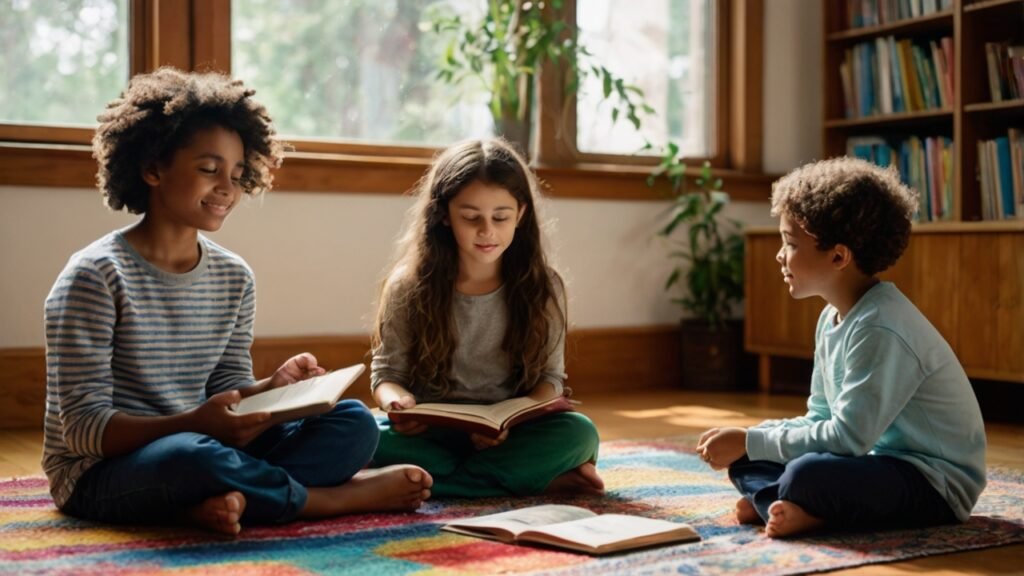
- Interactive Component: Have children relate how they would handle similar situations in real life.
- Outcome of Learning: This enhances the values of empathy and critical thinking along with the angle to look at things in a multiple perspective.
4. Gratitude Journaling
Encourage children to write or picture three things for which they are thankful every day.
- Consequence: Gratitude shifts focus from that bad negative feeling to something positive and rewarding.
- One Creative Approach: Let children decorate their journals or add stickers to make it personal.
- Further Activity: Let the family discuss theirs together weekly to encourage positive thoughts.
5. Mindful Moving
Bring yoga in or even basic stretching exercises that have an element of movement and focus on the breath.
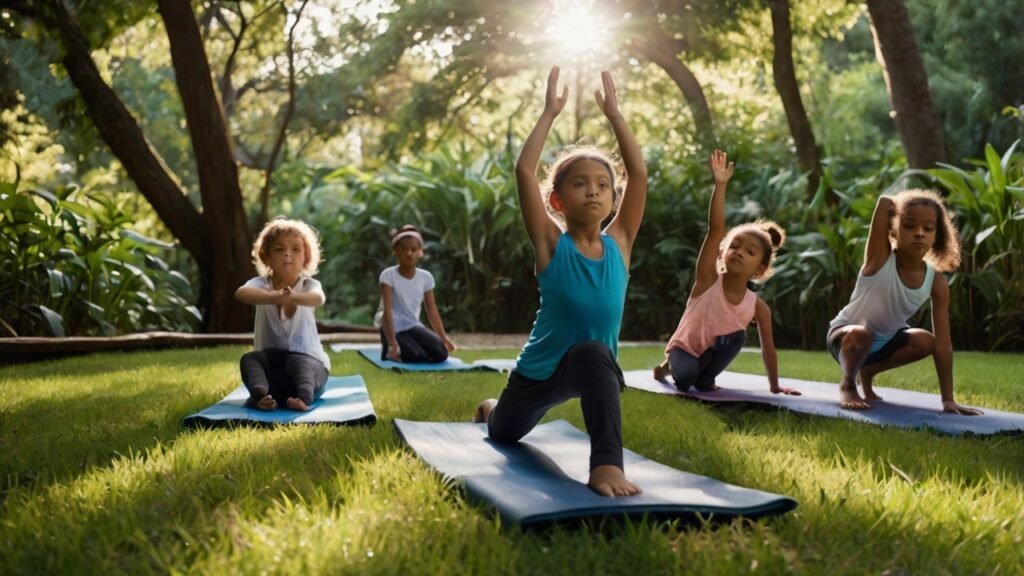
- Example: Place kitty and cow poses to make it interesting.
- Benefits: Helps to relieve energy when bottling, improves body awareness, and increases focus.
- Tip for Parents: Do these movements with them to bond.
Role of Parents and Educators
Parents’ Role in Fostering Mindfulness
By practicing mindfulness themselves, parents show the example of mindfulness for their children. Most children learn through imitation. Mindful activities like mindful eating or family meditation help create a nurturing situation in which children can learn to regulate their emotions.
- Family Activities: Set aside time at least once each day for a family “mindful moment” where everyone slows down and engages in an activity together.
- Positive Reinforcement: Reinforce the practice by praising kids for mindfulness.
- Story Time Integration: Read books about mindfulness together at bedtime to pique their interest.
- Routine: Devote specific times of the day to mindfulness practice, so it becomes a routine event in life.
Educators’ Role in Promoting Mindfulness
Creating a “mindful moment” at the beginning of the day or instituting calming techniques at the end of recess are two examples of ways teachers can invite mindfulness practice into the classroom.
Classroom Techniques: Such as using mindfulness jars, where glitter jars are provided to be shaken by students and, as a form of cal.blogspot.com, have them watch the glitter settle.
Workshops: To provide staff and students with knowledge regarding the benefits of mindfulness, a school organization may set up a workshop for mindfulness.
Mindfulness Corners: Build a specific area for mindfulness break within the class, where students can take some time off for meditation.
Participatory act which may assume collaborative processes: Activities within groups should be silence reading or collaborative art but could be considered to enhance the mindfulness principles.
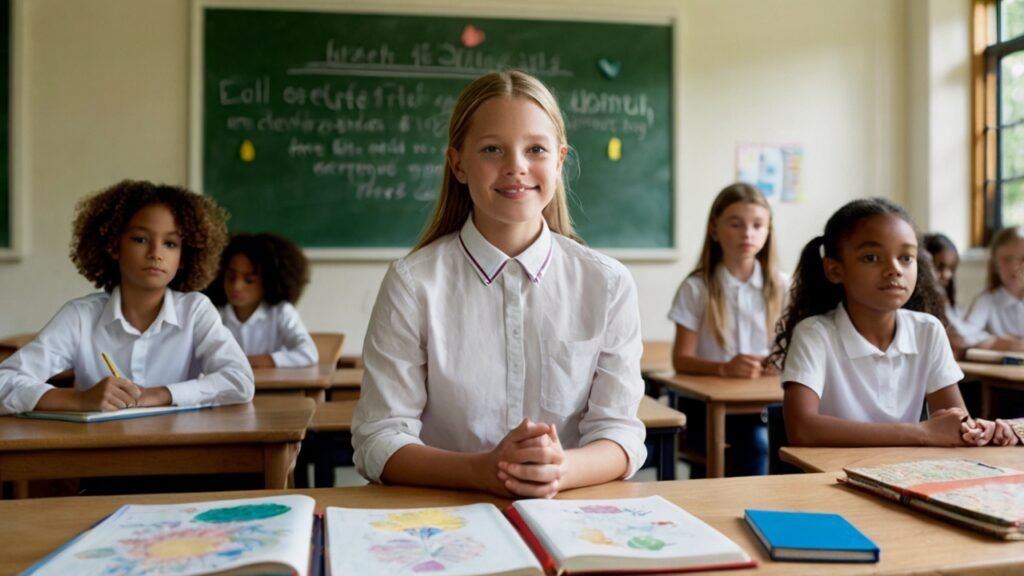
In this manner, parents and the educators draw closer together towards the unified cause of ensuring the mind of children is being subjected even in schools. Mindfulness will be encouraged and emulated by the adults, followed by creating daily opportunities for practice so that these skills will be effectively internalized by them into their lives.
Challenges and How to Overcome Them
Common Obstacles
- Short Attention Span: In their younger years, children have trouble staying with anything.
- Resistance to Change: Mindfulness may be strange or uncomfortable for children at first.
- Low Resources: Mindfulness material isn’t available for all parents and schools.
Solutions
- Make It Fun: Mindfulness could be taught through games or exciting activities.
- Start Small: Start short sessions and then gradually increase the duration.
- Be Regular: Daily practice makes the habit easier.
- Look for Community Support: Joining regional mindfulness groups to find resources and shared experiences will be helpful to parents and teachers.
- Visual Aids: Show the concept of mindfulness on colorful charts or posters.
Mindfulness Tools and Resources
Recommended Apps for Kids
- Headspace for Kids: Offers guided meditations and breathing exercises.
- Calm Kids: Includes relaxing stories and mindfulness activities.
- Stop, Breathe & Think Kids: Helps children manage emotions through playful exercises.
- Smiling Mind: Provides structured programs tailored for different age groups.
- Breathe, Think, Do: A fun app designed to teach emotional regulation skills to young children.
Books to Explore
- “Sitting Still Like a Frog” by Eline Snel – A guide to mindfulness for kids and their parents.
- “A Handful of Quiet” by Thich Nhat Hanh – Simple mindfulness exercises for children.
- “Mindful Monkey, Happy Panda” by Lauren Alderfer – A fun and engaging way to introduce mindfulness to young readers.
- “The Mindful Child” by Susan Kaiser Greenland – Offers practical strategies for teaching mindfulness.
Conclusion
Mindfulness for children’s emotional regulation is a powerful tool for helping children manage their emotions and navigate challenges with resilience. Mindfulness teaches emotional understanding, thoughtful responses, and stronger relationships in children. Parents and educators, who are critical in this area, have the roles of modelling as well as leading the children into a mindful approach toward life, which involves emotional growth and wellness. It is practice that could empower them to regulate their emotions and flourish.
Introducing mindfulness into your child’s daily routine can do without drastic changes but rather, small thoughtful steps. Just gradually these would lead to the small scale but very real changes in emotional health and well-being. With this investment of mindfulness today, they will hold a tool later for leading a balanced, joyful life. Making this second nature, in time, can pass into adulthood as positive and resilient ripples in the community.
Read more about Mindful Breathing Techniques: Discover Peace Today
Frequently Asked Questions
1. What is mindfulness, and in what way does it benefit children?
Mindfulness is the art of being fully present, thinking, and feeling without judgment. This in turn leads children to have better concentration, lesser stress, and emotional balance-the ability to make better decisions as well as self-control over emotions.
2. What can be some easy mindful practices for little ones?
They can inhale and exhale deep breath, have a body scan, maintain a gratefulness journal, and can also move mindfully through activities such as yoga. These simple activities can ease tension in kids and develop concentration and self-awareness.
3. What would the use of parents and teachers be to a child learning mindfulness?
Model mindfulness; for example, family meditation or eating mindfully. Teachers may do mindful moments, have sparkle jars or create mindfulness corners-much like classrooms encourage practice.

